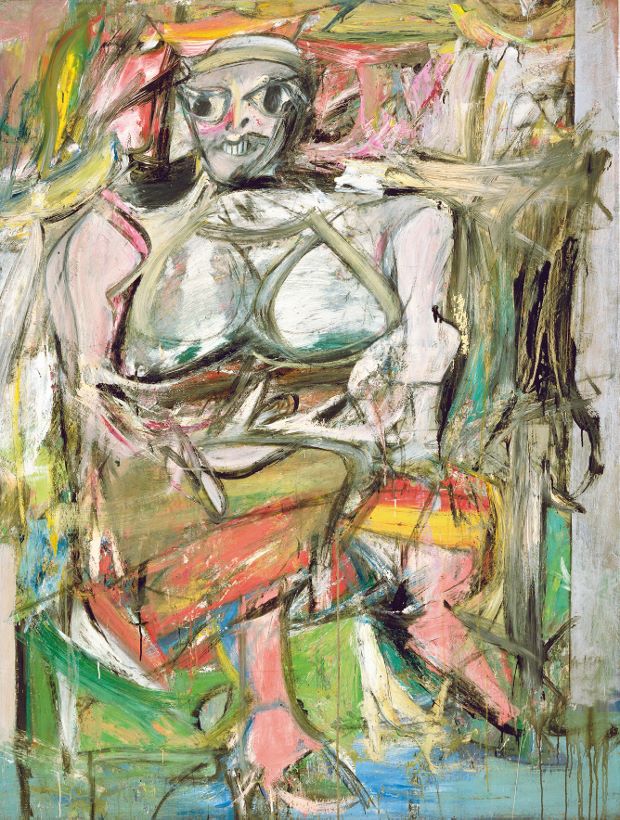
This artwork by William de Kooning is a painting done in the time period of 1950-52, entitled "Woman, I." In the Moma blurb, it states that this painting "reflects the age-old cultural ambivalence between reverence for and fear of the power of the feminine." I chose this because the topic of exploiting women within artwork was brought up during class this semester. This topic was interesting to me because not only was it a popular topic back in the older days, but currently as well. The infatuation with a woman's body has always been the main focus that is exaggerated upon within artwork that contains a female. The purpose of paintings like these was to make an extraordinary version of the ordinary woman. The blurb would describe the context of the art piece. As for the objective content of the painting, Kooning chose to make the most obvious features the breasts, face, shoulders, and feet. These features have the most geometrically shaped forms, appose to the rest of the painting that contains shapes that are more organic. If it wasn't for this class, I wouldn't even understand terms like the ones I have mentioned. Also, I definitely would pay attention to specific features within artwork. If I were to see this, let's say, last year, I would simply see a painting that seemed to be a supposed woman, but was poorly painted. As for now, I see the body of a woman being cut apart to insinuate her most prominent body features. These days, the attention drawn upon a woman isn't as vaguely interpreted as this painting. Currently we are used to seeing more modernized art that is done with the use of cameras. Although the tools change, the focus remains the same.



























